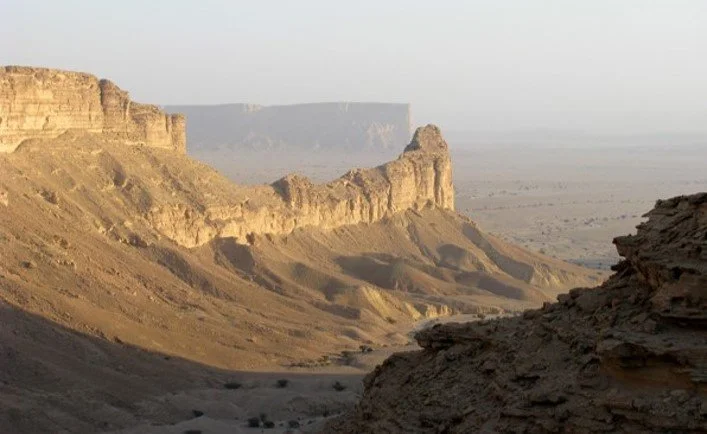Arabia – it’s role in deciphering the last 600 million years of Earth history
WEBINAR
5th October 2023 16:00 BST
by Professor Mike Simmons
(Technology Fellow for Geosciences & Energy Transition, Halliburton
& Visiting Professor Royal Holloway)
Missed it? Catch up on our YouTube Channel!
Abstract
The rocks of Arabia form an important archive for understanding the history of our planet, and the fossil content of these rocks is an important aid to understanding the age of the rocks and the changing pattern of depositional environments the rocks represent. Nowhere is this more true than in Central Arabia where the rock record extends back a billion years into the deep time history of the Earth.
Arabia forms part of a distinct geological entity (the Arabian Plate) that is bounded by Red Sea and Gulf of Aden spreading centres to the south-west and south-east, the collision zone of the Zagros Mountains to the north-east and the Mediterranean to the north-west. Plate tectonics has led to the latitudinal position of the Arabian Plate shifting over the last 600 million years from the equator to a position around 45° S around 400 million years ago and back to an equatorial position around 200 million years ago and then to its position around 25° N today. These geodynamic movements are responsible for a highly varied depositional history.
The oldest rocks are the Precambrian of the Arabian Shield, representing the accretion of a series of volcanic arc terranes on the margins of Gondwana. These are mostly metamorphic and igneous rocks in Saudi Arabia, but in neighbouring Oman, the Precambrian rock record contains important evidence for Precambrian glaciation events (so called “Snowball Earth”) as well some ancient life in the form of stromatolites and other simple algal fossils.
During much of the Palaeozoic, sedimentary deposition took place in on the Arabian Platform as sediment was shed from the Arabian Shield and deposited in a range of alluvial, deltaic, and shallow marine environments. These sediments contain important trilobite and graptolite fossils, useful for correlation and age calibration, as well a wide variety of microfossils. A particular notable feature is the record of major glaciation at the end of Ordovician period (c. 440 Ma).
Following a period of uplift in the Late Carboniferous, there is evidence for another period of glaciation that ended during the Permian, after which sea-level rose, and given the tropical latitude of the Arabian Plate, led to the onset of carbonate deposition that is the distinctive feature of deposition throughout much of the Mesozoic and Cenozoic. These rocks are economically important, holding vast reserves of oil and gas, but also form an important record of changing sea-level and associated changing climate. They are also excellent archives of the evolution of marine life, being rich in ammonites, reef-forming rudist bivalves, and many different types of microfossils. They also contain marine reptiles and, very rarely, dinosaur remains.
The youngest rocks of Central Arabia, of Quaternary age are important for deciphering the remarkable climate change that has taken place in the last c. 2 million years of Earth history. The episodic greening of Arabia and arrival of early man can be linked to global climatic cycles.
Biography
Mike has spent much of his geological career working on the geology of the Middle East, beginning with his PhD at the University of Plymouth on the micropalaeontology of the Cretaceous carbonate rocks of the Oman Mountains. Since then, Mike has investigated the geology of the entire Arabian Plate and was a co-author of the book “Arabian Plate Sequence Stratigraphy” published in 2001. His career has spanned both industry and academia, working at BP, Aberdeen and Cambridge Universities, Neftex, and most recently Halliburton, where he Technology Fellow for Geosciences and Energy Transition. He is a Visiting Professor at the University of London.


